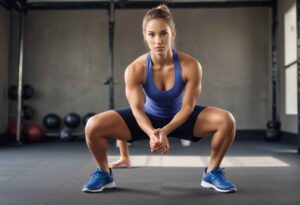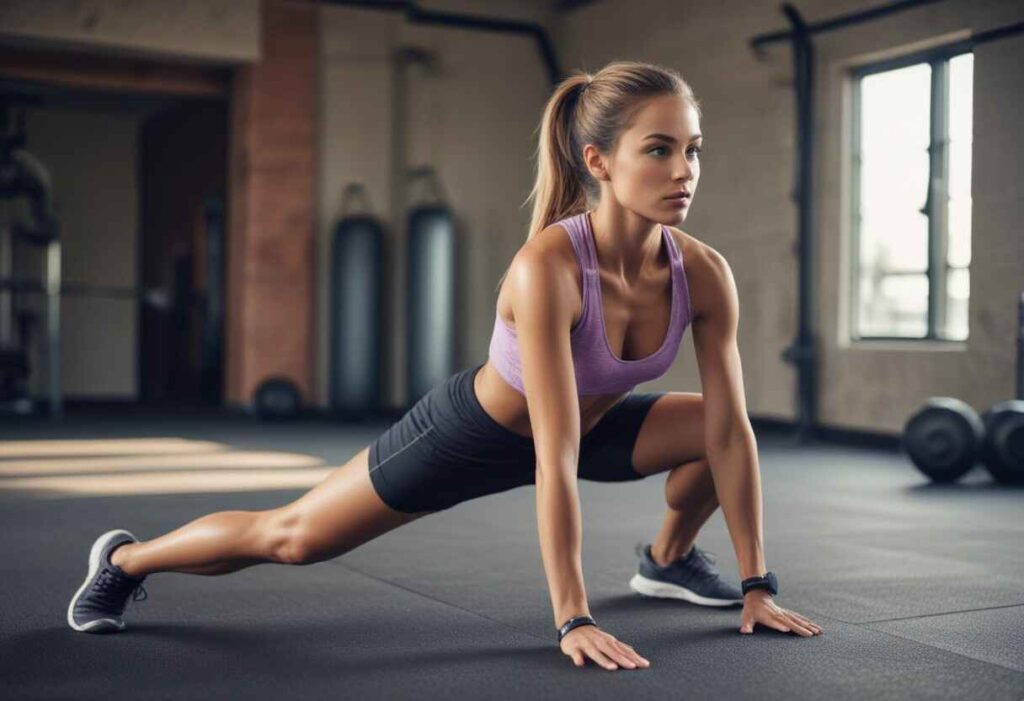Physical fitness isn’t just about looking good in a swimsuit (though that’s a nice bonus!). It’s about having a strong and healthy body that can handle daily activities. With lots of advice around, it can be tough to figure out where to start. The good news is that there are five main parts of physical fitness. Focusing on these can help you become healthier and happier.
Cardiovascular Endurance
Cardiovascular endurance is how well your heart, lungs, and blood vessels supply oxygen to your body during long periods of exercise. This is important for activities like running, swimming, and cycling. If you have good cardiovascular endurance, you can do these activities for a longer time without getting tired quickly.
Benefits:
- Makes your heart stronger, helping it pump blood better.
- Increases lung capacity, allowing you to breathe and use oxygen more efficiently.
- Boosts stamina and reduces tiredness during long activities.
How to Improve Cardiovascular Endurance:
- Do aerobic exercises like jogging, brisk walking, cycling, or swimming.
- Try to do at least 150 minutes of moderate exercise or 75 minutes of intense exercise each week.
- Add interval training, which means switching between high and low intensity, to improve your endurance.
Muscular Strength
Muscular strength is how much force your muscles can use in one effort. It’s important for everyday activities like lifting heavy things, pushing furniture, or carrying groceries. Strength training helps build muscles, strengthens bones, and boosts your metabolism.
Benefits:
- Improves performance in sports and activities that need power and strength.
- Makes everyday tasks like lifting and carrying things easier.
- Builds stronger bones and reduces the chance of osteoporosis.
How to Improve Muscular Strength:
- Do resistance training exercises like weight lifting, push-ups, or using resistance bands.
- Work on different muscle groups, including your legs, back, chest, and arms.
- As you get stronger, slowly lift heavier weights or increase resistance.

Muscular Endurance
Muscular endurance is how well your muscles can keep working over time or keep pushing against something. This is important for activities that need long-lasting effort, like rowing, cycling, or holding a position for a while.
Benefits:
- Improves performance in endurance sports and activities.
- Helps with better posture and lowers the chance of injuries.
- Allows you to do repetitive tasks longer without getting tired.
How to Improve Muscular Endurance:
- Do activities like cycling, swimming, or body-weight exercises such as planks and squats.
- Use lighter weights or resistance and do more repetitions.
- Try circuit training, where you do a series of exercises with little or no rest in between.
Flexibility
Flexibility is how much you can move a joint or group of joints. It’s important for doing everyday tasks without pain or injury, like bending, reaching, or twisting. Good flexibility can also improve your posture and lower the risk of muscle strains and joint injuries.
Benefits:
- Improves performance in activities like gymnastics and dance that need flexibility.
- Lowers the risk of injuries by making joints and muscles more flexible.
- Eases muscle tension and soreness, helping with relaxation and recovery.
How to Improve Flexibility:
- Stretch regularly, focusing on your main muscle groups.
- Do activities like yoga or Pilates to improve flexibility.
- When you stretch, hold each position for 15-30 seconds without bouncing.
Body Composition
Body composition means looking at how much of your body is fat and how much is everything else. Being healthy in body composition means having less fat and more muscle. It’s an important way to see how healthy and fit you are overall.
Benefits:
- Lowers the risk of chronic diseases like heart disease, diabetes, and high blood pressure.
- Improves physical appearance and boosts self-confidence.
- Increases metabolism and energy levels by building lean muscle.
How to Improve Body Composition:
- Do both aerobic and strength training exercises often.
- Eat a balanced diet with lots of whole foods, lean proteins, healthy fats, and plenty of fruits and veggies.
- Keep track of how you’re doing and change your exercise and diet as necessary.
Including the Five Fitness Components in Your Workout Plan
A good fitness program should cover all five parts of physical fitness. Here are some simple tips to include each part:
- Cardiovascular Endurance: Do regular aerobic workouts throughout the week, changing the intensity and duration to keep things interesting.
- Muscular Strength: Add resistance training (like lifting weights) two to three times a week, focusing on different muscles each time.
- Muscular Endurance: Include exercises that build endurance, like high-rep resistance training and long-lasting aerobic activities.
- Flexibility: Spend time stretching before and after workouts, and try flexibility-focused activities like yoga.
- Body Composition: Eat a balanced diet and stay active, checking your progress and adjusting as needed to stay healthy.
| Component | Description | Example Exercises | Benefits |
| Cardiovascular Endurance | The ability of your heart and lungs to work efficiently during exercise. | Running, cycling, swimming | Improves heart health, burns calories |
| Muscular Strength | The maximum amount of force a muscle can exert in a single effort. | Weight lifting, bodyweight squats | Enhances muscle mass, boosts metabolism |
| Muscular Endurance | The ability of a muscle to continue performing without fatigue. | High-rep squats, planks, push-ups | Increases stamina, improves overall endurance |
| Flexibility | The range of motion available at a joint. | Stretching, yoga, Pilates | Reduces injury risk, improves movement efficiency |
| Body Composition | The ratio of lean mass to fat mass in your body. | Strength training, cardio, healthy eating | Supports overall health, enhances physical appearance |
Conclusion
Knowing and working on these five parts of physical fitness can help you live a healthier, more active life. If you do things that help your heart and lungs, make your muscles stronger, improve your muscle endurance, make you more flexible, and balance your body fat, you’ll be in good shape overall. Just keep at it regularly and take small steps forward to see lasting changes in your fitness.

